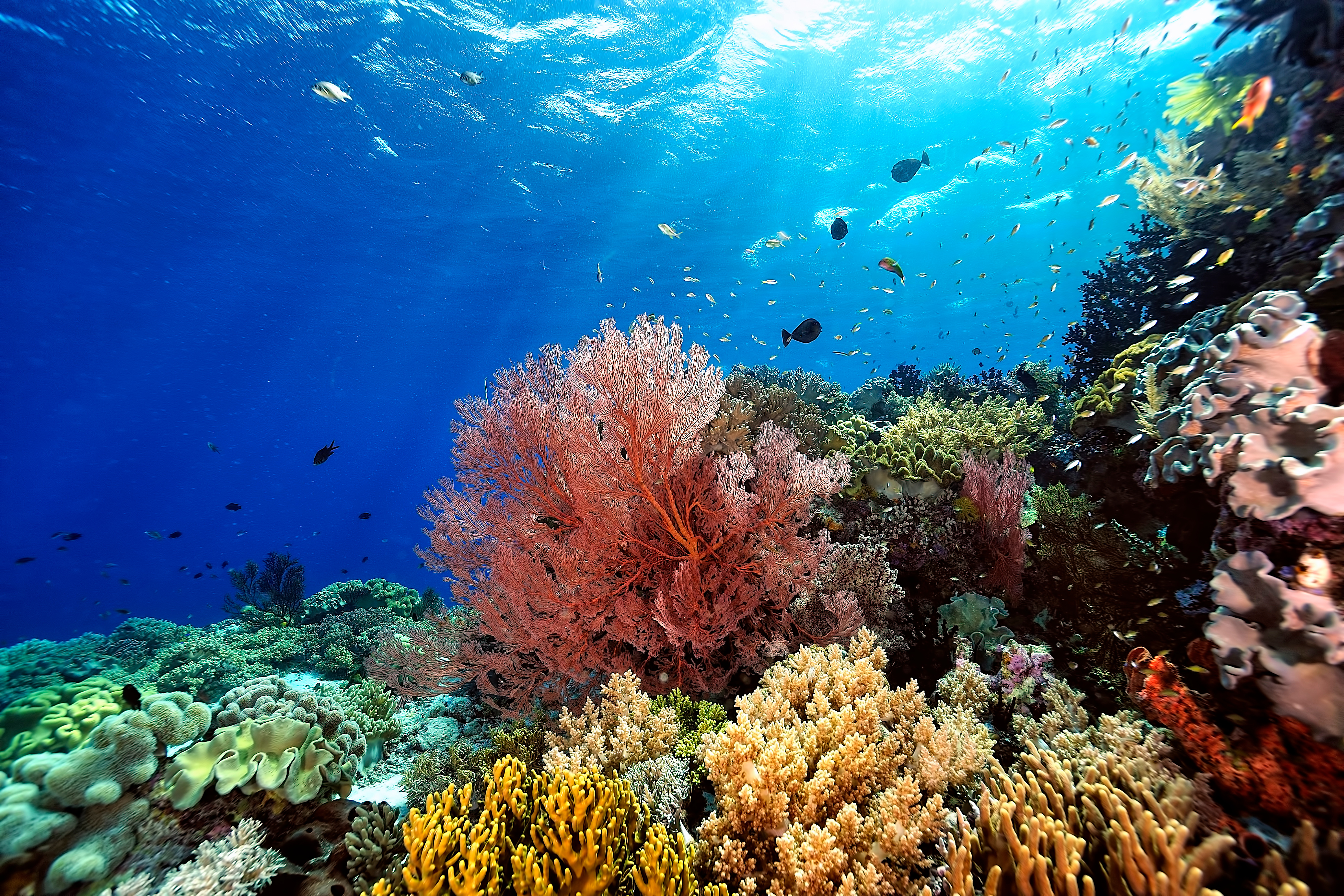Can Coral Reefs Be Saved?
Some Species of Coral Are Tolerating Higher Temperatures

Oceans provide inestimable ecological services to our planet. They are the earth’s largest carbon sink, containing 12 times more carbon than land. Up until now, they have absorbed 93 percent of increased atmospheric heating and 25 percent of CO2 emissions. The capacity of oceans to continue absorbing heat and carbon without catastrophic disruption is reaching its limit. Increasingly we are experiencing oceanic heat waves, growing acidification, slowing of major ocean currents, and the stalling of the upwelling of cold, nutrient-rich waters from the oceans’ depths.
Coral reefs occupy only a small area of the ocean floor but play a key ecological role. They protect coastlines from storms and erosion, serve as nurseries for fish and other sea creatures, and are critical to biodiversity. Twenty-five percent of all ocean species are dependent on reefs. As reefs die off from acidification, these services are declining. Due to warming waters, increasing ocean acidity, and growing pollution and toxicity, half of all reefs have died in the last 30 years, and the rate of die-off is increasing.
The planet’s most abundant vertebrates are fish that live 600 to 3,300 feet below the ocean’s surface. They migrate from the bottom of this range, where they stay during the day to avoid predators, toward the surface at night to feed on plankton. The fish digest their food at depth in their alkaline-based stomachs but poop it as calcite crystals of carbonate when they rise to the surface, thereby countering the acidity of oceans. This alkalinity pump is driven by billions of little fish moving up and down daily.
A strategy, currently in pilot phase, to expand this natural “biological pump” is to create a network of submerged seaforestation platforms. These platforms (envisioned up to one square kilometer in size) are sunk just deep enough that their kelp and red algae forests barely touch the ocean’s surface so ships can pass over them. Large areas of the open ocean are considered marine deserts. For engineered seaforestation to flourish, it needs nutrient-rich cold water brought to the surface from several thousand feet down. One scheme to cycle these waters harnesses renewable energy from solar and wave power. Arrays of kelp forests on underwater platforms could sequester massive amounts of carbon, pump enough cold water to blunt heat waves, and restore coral reefs.
Another ray of hope is that researchers have discovered the thermal tolerance of coral reefs along the west coasts of the Americas has been spontaneously rising over the past four decades. The explanation seems to be that these corals are changing the symbiotic algae community they host, drawing ones that are better adapted to heat, and, through the algae’s photosynthesis, providing them with the energy they need to live. This means that some reef systems are more resilient to warming than previously thought. Since this adaptation happens slowly, we still need to take strong action to mitigate climate change.
Premier Events
Sat, Dec 21
11:00 AM
Santa Barbara
Mosaic Makers Market – Holiday Weekend Market
Sun, Dec 22
11:00 AM
Santa Barbara
Mosaic Makers Market – Holiday Market Finale
Wed, Dec 25
6:00 PM
Santa Barbara
FREE Contra Dance X-mas Day💃Corwin & Grace band6-9
Sat, Dec 21
11:00 AM
Santa Barbara
Mosaic Makers Market – Holiday Weekend Market
Sat, Dec 21
12:00 PM
Santa Barbara
Gift Wrapping with Life Chronicles
Sat, Dec 21
2:00 PM
Santa Barbara
State Street Ballet’s 30th Anniversary Production of ‘The Nutcracker’
Sat, Dec 21
4:00 PM
Santa Barbara
Wine + Painting Workshop
Sat, Dec 21
5:00 PM
Santa Barbara
The Rhythm Industrial Complex: Live at Fox Wine Co
Sat, Dec 21
5:00 PM
Santa Barbara
LET IT GLOW Winter Solstice on State St.
Sat, Dec 21
5:15 PM
Santa Barbara
The Longest Night Memorial
Sat, Dec 21
5:30 PM
Santa Barbara
First United Methodist Church Living Nativity
Sat, Dec 21
6:00 PM
Santa Barbara
Captain Fatty’s Ugly Xmas Sweater Party
Sat, Dec 21
6:30 PM
Santa Barbara
Ugly Sweater Singles 30s and 40s Party!
Sat, Dec 21 11:00 AM
Santa Barbara
Mosaic Makers Market – Holiday Weekend Market
Sun, Dec 22 11:00 AM
Santa Barbara
Mosaic Makers Market – Holiday Market Finale
Wed, Dec 25 6:00 PM
Santa Barbara
FREE Contra Dance X-mas Day💃Corwin & Grace band6-9
Sat, Dec 21 11:00 AM
Santa Barbara
Mosaic Makers Market – Holiday Weekend Market
Sat, Dec 21 12:00 PM
Santa Barbara
Gift Wrapping with Life Chronicles
Sat, Dec 21 2:00 PM
Santa Barbara
State Street Ballet’s 30th Anniversary Production of ‘The Nutcracker’
Sat, Dec 21 4:00 PM
Santa Barbara
Wine + Painting Workshop
Sat, Dec 21 5:00 PM
Santa Barbara
The Rhythm Industrial Complex: Live at Fox Wine Co
Sat, Dec 21 5:00 PM
Santa Barbara
LET IT GLOW Winter Solstice on State St.
Sat, Dec 21 5:15 PM
Santa Barbara
The Longest Night Memorial
Sat, Dec 21 5:30 PM
Santa Barbara
First United Methodist Church Living Nativity
Sat, Dec 21 6:00 PM
Santa Barbara
Captain Fatty’s Ugly Xmas Sweater Party
Sat, Dec 21 6:30 PM
Santa Barbara

























